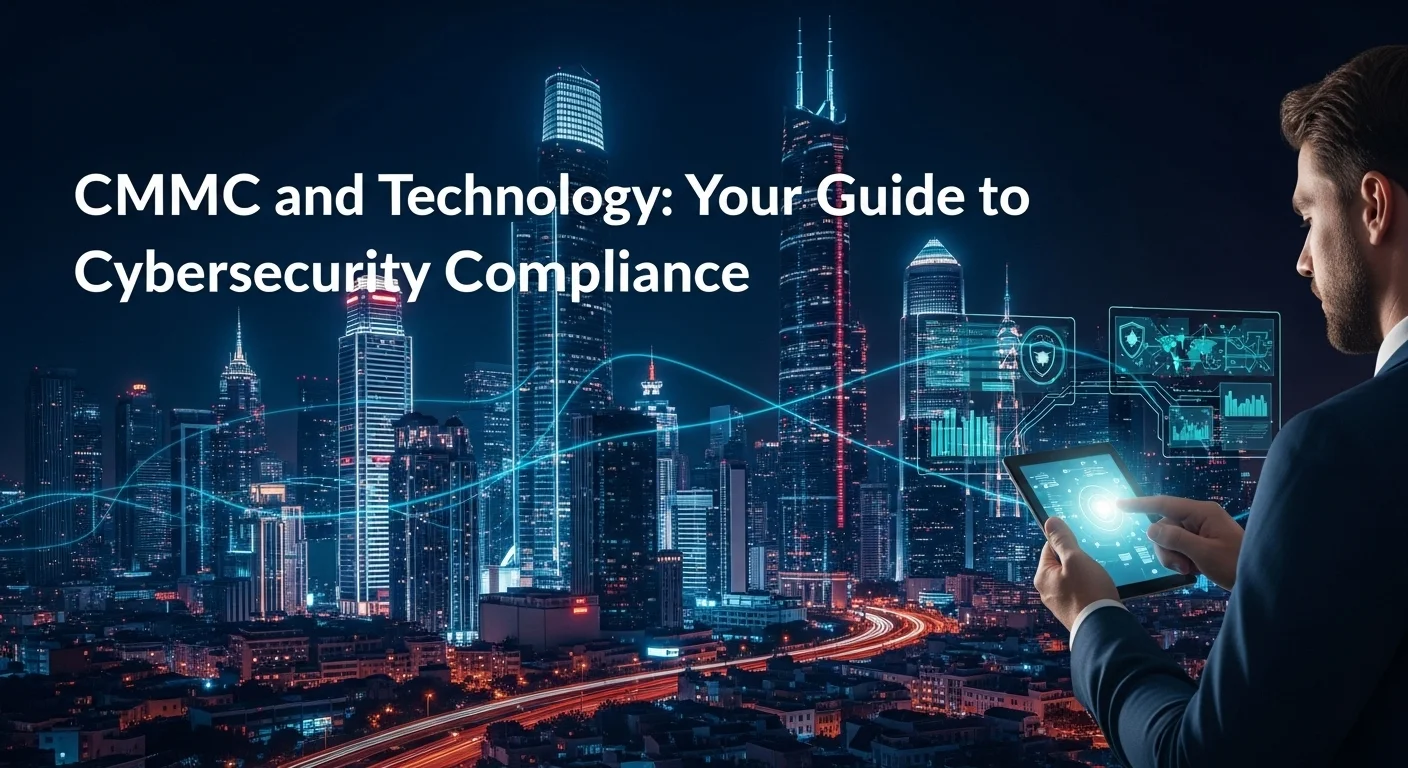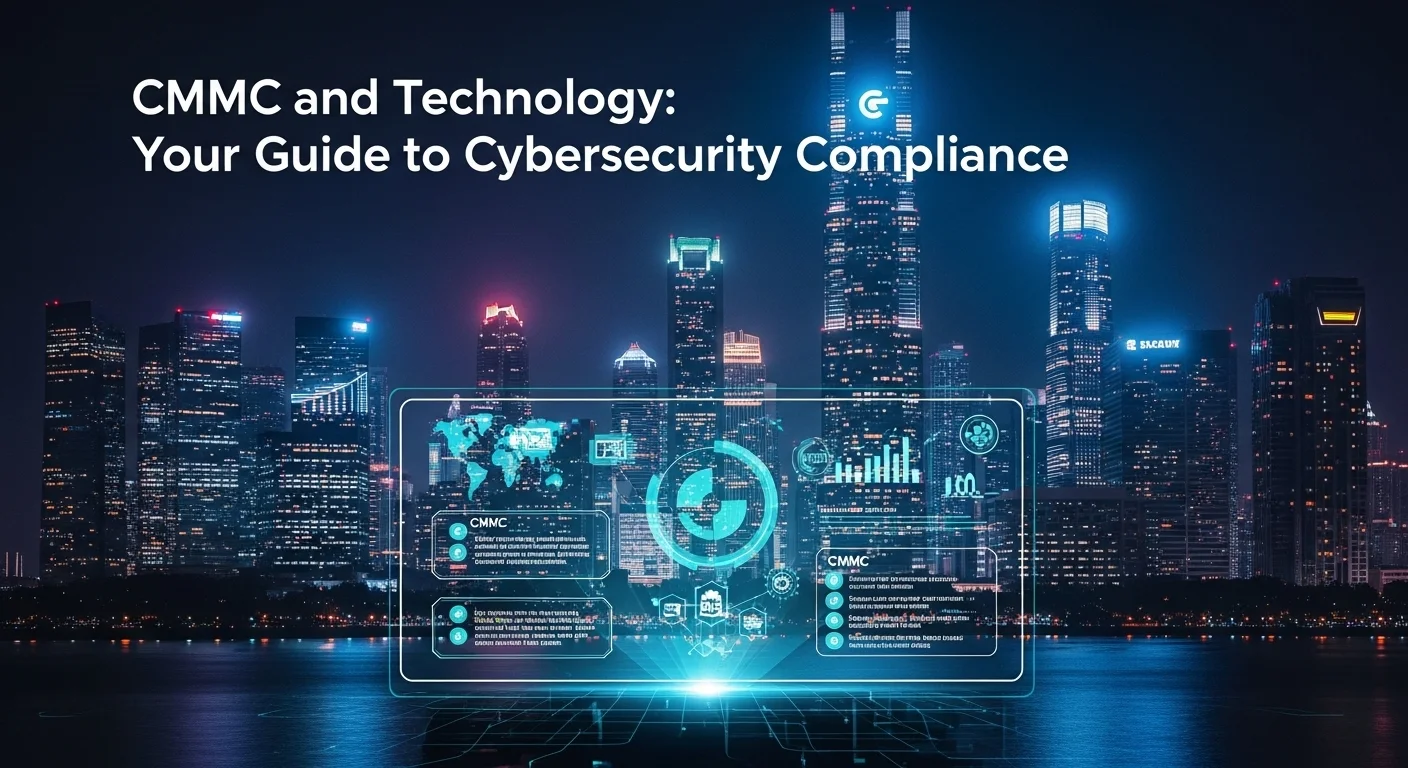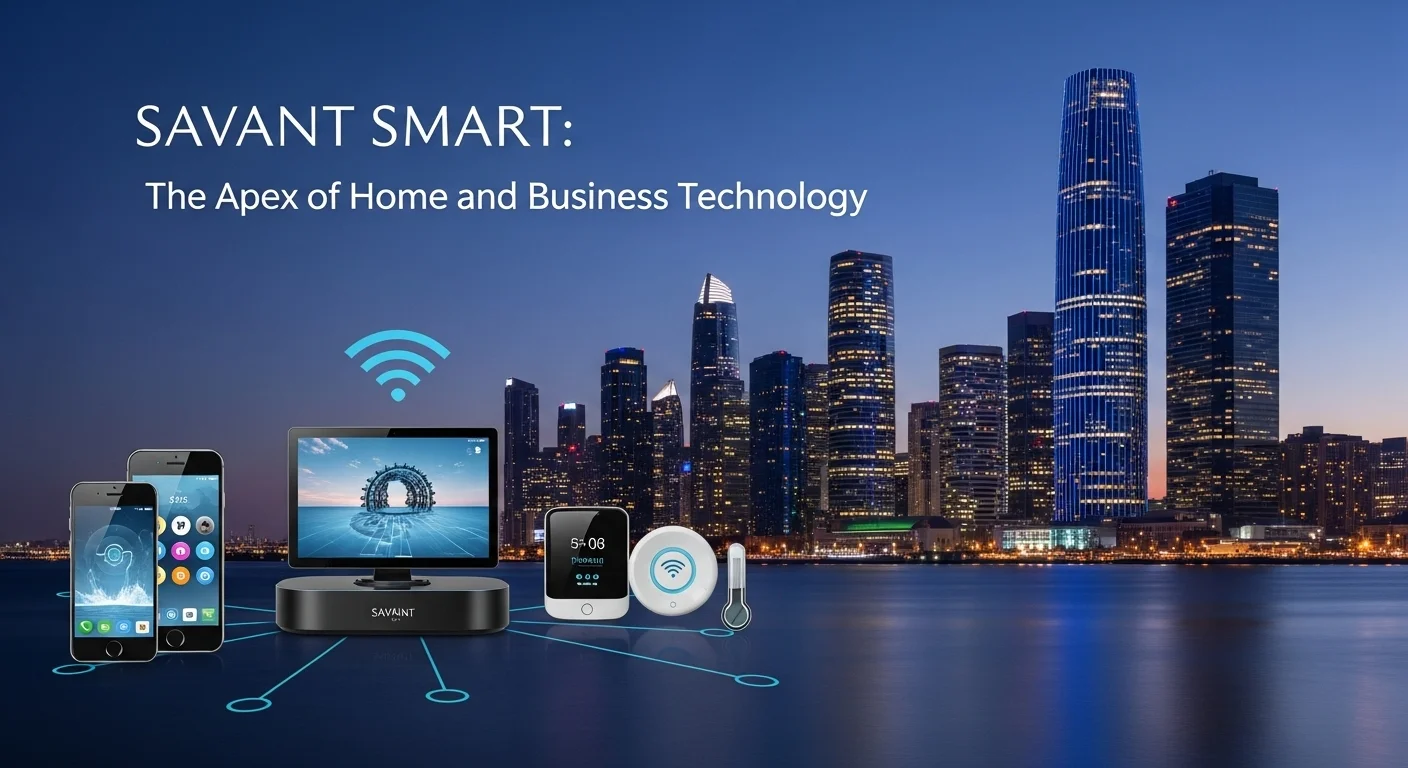Cracking the Code on CMMC: A Real-World Tech Guide to DoD Compliance

Executive Summary
Let's be honest, the Cybersecurity Maturity Model Certification (CMMC) can feel like a mountain of acronyms and regulations. As someone who has been in the trenches helping businesses navigate this framework, I can tell you it's one of the most important shifts in cybersecurity for anyone working with the U.S. Department of Defense (DoD). This isn't just about ticking boxes for the government; it’s about genuinely protecting sensitive information (FCI and CUI) from real-world cyber threats. In this guide, I'll break down CMMC 2.0 into plain English, explaining the three levels and what they actually mean for your daily operations. We'll walk through the practical steps, from getting a readiness assessment to finding trustworthy CMMC consultants and Registered Provider Organizations (RPOs). My goal is to give you a clear, actionable roadmap to not only achieve compliance but to build a stronger, more resilient business in the process.
Table of Contents
What CMMC Really Means for Your Tech Business
Table of Contents
- What is CMMC and Why Should You Care?
- From 1.0 to 2.0: Making Compliance More Practical
- Why CMMC is a Critical Tech Mandate, Not Just Paperwork
- The Value of an Expert Guide: Finding CMMC Consultants
- Your First Step: The CMMC Readiness Assessment
- Decoding the Ecosystem: What is a CMMC RPO?
- A Spectrum of Support: Finding the Right CMMC Services
- The Real Goal: Achieving and Sustaining CMMC Readiness
In our hyper-connected world, cybersecurity isn't just an 'IT thing'—it's the backbone of national security and business survival. For any company in the Department of Defense (DoD) supply chain, this is codified in the Cybersecurity Maturity Model Certification (CMMC). I've seen firsthand how CMMC changes the game. It moves us away from a 'trust me, I'm secure' honor system to a 'prove it' model of required assessments. If you want to work with the DoD, understanding CMMC isn't optional; it's your ticket to the dance.
The Genesis of CMMC: Securing the Defense Industrial Base
Imagine a network of over 300,000 companies building everything for the U.S. military. That's the Defense Industrial Base (DIB), and it's a massive target for cyber adversaries looking to steal designs, disrupt operations, or compromise our assets. The DoD realized that inconsistent security practices were leaving the door wide open. CMMC was born in 2020 to fix this. Its mission is simple: protect two types of sensitive info—Federal Contract Information (FCI) and the more critical Controlled Unclassified Information (CUI). CMMC creates one security standard for everyone, from a massive prime contractor to a small, family-owned machine shop.
From CMMC 1.0 to 2.0: An Evolution in Cybersecurity Technology
The first version, CMMC 1.0, was ambitious with its five levels, but many smaller businesses found it too complex and expensive. I heard this feedback constantly. The DoD listened, and in late 2021, they gave us CMMC 2.0. This streamlined version is far more practical. It cut the levels to three, aligned its requirements directly with well-known NIST standards, and even allows for self-assessments at the foundational level. This shift shows a focus on real-world security over bureaucracy. With the rollout expected to gather steam, the time to prepare is now, not later.
Why CMMC is a Critical Technology Mandate
At its core, CMMC is all about your technology and how you use it to protect data. It requires specific technical controls across 14 areas, from who can access your network to how you respond to an incident. To get compliant, you have to take a hard look at your tech stack: your network design, data storage, user access rules, and your plan for when things go wrong. This is where the rubber meets the road. It's not a paperwork drill; it's a hands-on tech overhaul. The process almost always uncovers security gaps you never knew you had, making your business stronger whether you get certified or not.
The Value of an Expert Guide: Finding CMMC Consultants
Even in its simpler form, CMMC 2.0 is dense. Level 2 alone has 110 security controls from NIST SP 800-171, and the language can be tricky. This is where I've seen CMMC consultants become a game-changer for businesses. A good consultant has lived and breathed these standards. They'll start with a gap analysis—basically, a health check of your current security against the CMMC requirements. From there, they build you a roadmap, translating complex rules into a clear to-do list. This saves you an incredible amount of time and headaches, and dramatically lowers your risk of failing an official assessment.
Your First Step: The CMMC Readiness Assessment
Your entire compliance journey starts with one thing: a CMMC readiness assessment. This isn't a quick quiz; it's a deep dive into your people, processes, and technology. It involves reviewing your documentation, talking to your team, and testing your systems. The most valuable output is a detailed report showing where your gaps are. This usually comes with a Plan of Action & Milestones (POA&M), which is your project plan for fixing everything. Doing a thorough CMMC readiness assessment upfront is the smartest move you can make. It tells you how big the mountain is and gives you a map to the summit.
Decoding the Ecosystem: What is a CMMC RPO?
The CMMC world has its own players. A key one is the CMMC RPO, or Registered Provider Organization. Think of an RPO as a consulting firm that's been officially vetted and authorized by the CMMC Accreditation Body (The Cyber AB) to give CMMC advice. To become an RPO, a company has to meet strict criteria, including employing certified professionals. Working with a CMMC RPO gives you confidence that the advice you're getting is legit. It's important to know that RPOs advise and prepare you, while a different type of company, a C3PAO, performs the official audit. You can't use the same company for both, to ensure there's no conflict of interest.
A Spectrum of Support: Finding the Right CMMC Services
CMMC isn't a 'one and done' project. It's an ongoing commitment. Because of this, a whole industry of CMMC services has popped up to help. You can usually pick and choose what you need. These services include gap assessments, writing security policies, creating your System Security Plan (SSP), technical help (like setting up multi-factor authentication or encryption), employee training, and continuous monitoring. Many providers, especially a CMMC RPO, bundle these into a complete package. Engaging these CMMC services lets you lean on experts, freeing up your team to do what they do best.
The Real Goal: Achieving and Sustaining CMMC Readiness
The ultimate objective is to reach a state of continuous CMMC readiness. This means your security controls are always on, always managed, and always improving. It's about building a security-first culture, not just cramming for an exam. Achieving CMMC readiness requires support from the top, awareness from every employee, and the right tech tools. It’s a major effort, but it cements your place as a trusted partner in the defense marketplace and a company that takes protecting our nation's data seriously.

Your Complete Guide to CMMC Technology and Business Solutions
Navigating the Cybersecurity Maturity Model Certification (CMMC) means getting comfortable with its technical demands while being smart about your business strategy. I'm here to give you a clear view of the CMMC 2.0 model, its tech requirements, and the business solutions that can help you succeed. For any tech-focused company in the Defense Industrial Base (DIB), getting CMMC right isn't just about compliance—it's about survival and growth.
Breaking Down CMMC 2.0: The Three Levels of Trust
CMMC 2.0 simplifies cybersecurity into three levels. Think of it as a staircase, where each step builds on the one before it, ensuring the level of security matches the sensitivity of the information you handle.
Level 1: Foundational
This is the starting point. If your company only handles Federal Contract Information (FCI), this is for you. Level 1 covers 17 basic cyber hygiene practices—things like using antivirus, controlling who can access your systems, and having basic password rules. Honestly, it's the stuff every business should be doing anyway. The good news? You can perform a self-assessment each year and report it to the government's SPRS system. It's the baseline for being a responsible partner.
Level 2: Advanced
Level 2 is the heart of CMMC 2.0 and where most contractors handling Controlled Unclassified Information (CUI) will land. It aligns perfectly with the 110 security controls from NIST SP 800-171, a standard many in the defense world already know. This was a smart move by the DoD to avoid reinventing the wheel. These controls cover everything from access control and incident response to supply chain risk.
Here's a key detail: how you get assessed at Level 2 depends on how critical your work is.
1. Triennial Third-Party Assessments: If you're handling CUI for crucial national security programs, you'll need an official audit every three years by an accredited CMMC Third-Party Assessment Organization (C3PAO).
2. Annual Self-Assessments: For some less critical contracts, you might be allowed to do a self-assessment, which still needs to be signed off by a senior company official.
Hitting Level 2 is a serious commitment that demands a mature security program. It’s the standard for the modern defense contractor.
Level 3: Expert
This is the top tier, reserved for companies working on the DoD's highest-priority programs. Level 3 includes all 110 controls from Level 2 plus additional, more advanced controls from NIST SP 800-172. These are designed to fight off sophisticated threats from nation-state hackers. We're talking proactive threat hunting and deep system resilience. Assessments for this level are so critical that they're handled by government assessors from the DCMA, not third-party auditors. Level 3 signifies a truly elite, proactive security posture.
The Tech Behind Compliance: Tools of the Trade
At its heart, CMMC is a technology challenge. Here are some of the key technologies I help clients implement:
Access Control and Identity Management: This is about making sure people can only access what they absolutely need to do their jobs. Think of Multi-Factor Authentication (MFA) as the digital bouncer for your sensitive data, combined with strong password rules and role-based access controls.
Data Encryption: CUI must be unreadable to unauthorized eyes, whether it's sitting on a server (at rest) or flying across the internet (in transit). This means using powerful, FIPS 140-2 validated encryption for everything from hard drives to emails.
Security Information and Event Management (SIEM): A SIEM is your digital security guard. It collects logs from all your systems, spots suspicious patterns, and gives you one place to investigate potential security incidents. It’s essential for monitoring and response.
Endpoint Detection and Response (EDR): Your laptops and servers are on the front lines. EDR goes beyond old-school antivirus to actively hunt for, investigate, and stop threats right on the device.
Cloud Security: Many of us live in the cloud. If you handle CUI, you must use a cloud environment built for it, like Microsoft 365 GCC High or Azure Government. These platforms meet the stringent federal security rules you're on the hook for.
Business Strategy for a Smooth CMMC Journey
Beyond the tech, a smart business strategy is what makes CMMC adoption successful.
The Holy Grail: Your SSP and POA&M: Your System Security Plan (SSP) is the document where you explain how you meet every single security control. Your Plan of Action & Milestones (POA&M) is your roadmap for fixing the things you don't. I tell my clients these aren't just compliance documents; they are your living, breathing management tools for your entire security program.
The Human Firewall: Training and Culture: Your people are your greatest asset and biggest vulnerability. CMMC requires robust security training. Your team needs to know how to spot a phishing email, handle CUI properly, and feel safe reporting a potential issue. This must be an ongoing effort.
To make sense of it all, many businesses wisely turn to professional CMMC services. A trusted partner, especially a CMMC RPO authorized by the Cyber AB, can be invaluable. They provide credible, expert advice, often starting with a CMMC readiness assessment to build your custom plan. Leaning on experienced CMMC consultants from an RPO helps you avoid common pitfalls and accelerates your path to CMMC readiness.

Practical Tips and Strategies to Master Your CMMC Technology Experience
I've seen companies treat Cybersecurity Maturity Model Certification (CMMC) like a chore, and I've seen others use it as a springboard to completely overhaul and improve their technology. The difference is in the approach. If you're strategic, this journey can be a powerful catalyst for building a more secure and competitive business. Here are some practical tips and strategies I share with my clients to not only meet CMMC requirements but to leverage the process for lasting technological strength.
A Proven Roadmap to CMMC Readiness
Jumping into CMMC without a plan is a recipe for disaster. I always recommend a structured, phased approach. It breaks the monumental task into bitesize, manageable steps, guiding you steadily toward a state of continuous CMMC readiness.
Step 1: Define Your Battlefield - The CUI Discovery Process
You can't protect what you can't find. Your first, most critical step is figuring out exactly where all your sensitive data lives. This means identifying every system, application, and person that touches Federal Contract Information (FCI) and, most importantly, Controlled Unclassified Information (CUI). A common mistake I see is making the scope too broad, which inflates costs, or too narrow, which guarantees a failed assessment. You need to map your data flows and pinpoint CUI everywhere, from email servers to cloud apps. This is where sharp CMMC consultants can save you a fortune by helping you accurately define your CUI boundary.
Step 2: Get Your Health Check - The Readiness Assessment
Once you know your scope, it’s time for a detailed CMMC readiness assessment. This is a gap analysis where you compare your current security against every control required for your target CMMC level. Please, don't treat this like a simple checklist. It's a deep dive. I strongly advise bringing in a third party, ideally a CMMC RPO, for this. An outside expert provides an unbiased view and knows how auditors interpret the rules. The result will be your POA&M (Plan of Action & Milestones), which becomes your remediation bible.
Step 3: Execute the Plan - Strategic Remediation
Your POA&M is your project plan for closing every security gap. This is often the most intense part of the journey. You might be writing new policies, training employees, or deploying new tech like a SIEM system. The key is to prioritize. Tackle the biggest risks and the easiest wins first. This is another area where engaging professional CMMC services can be a huge help, ensuring fixes are implemented correctly the first time.
Step 4: If It's Not Written Down, It Didn't Happen
CMMC audits are all about evidence. You have to prove you're doing what you say you're doing. Documentation is absolutely critical for CMMC readiness. Your System Security Plan (SSP) is the main event, detailing how you meet each security control. But you also need written policies for everything from incident response to access control. Think of it as building a library of proof for your future auditor.
Best Practices for a Program That Lasts
Certification isn't the end; it's the beginning. The real win is a sustainable security program that protects you long-term.
Get the Boss on Board
I can't stress this enough: CMMC is a business initiative, not an IT problem. You need active, visible support from your executive team. They need to understand the risks, champion the investment, and lead the cultural shift. Without buy-in from the top, the effort will almost certainly fail.
Build a Human Firewall
Your people are your first line of defense. Create a culture where security is everyone's job. This means ongoing, engaging training—not just a boring annual video. Use phishing simulations to keep people sharp. Make sure everyone knows their role in protecting CUI and feels comfortable reporting mistakes or concerns.
Let Technology Do the Heavy Lifting
Trying to manage 110 controls with spreadsheets is a nightmare. Use technology to automate where you can. Governance, Risk, and Compliance (GRC) tools can manage your SSP and evidence. Security tools like EDR and SIEM automate threat detection. And compliant cloud platforms like Microsoft 365 GCC High can handle a huge chunk of the technical burden for you.
Choosing Your Guides
Few businesses can do this alone. Choosing the right partners is everything. When you vet CMMC consultants or a CMMC RPO, demand to see their track record in the DIB. Ask for references. Your CMMC RPO is your coach, preparing you for the big game. The official assessment will be done by a separate, impartial C3PAO. The quality of the CMMC services you invest in will directly shape your success.
Expert Reviews & Testimonials
Sarah Johnson, Business Owner ⭐⭐⭐
The guide is solid, but as a small business owner, I'd love to see a few more relatable, step-by-step examples for companies like mine.
Mike Chen, IT Consultant ⭐⭐⭐⭐
A really useful breakdown of CMMC. It clarified a lot for me, though a glossary for some of the deeper tech terms would be a great addition.
Emma Davis, Tech Expert ⭐⭐⭐⭐⭐
Finally, a CMMC article that makes sense! It's comprehensive without being overly technical. This was a huge help for my specialization. Highly recommended.



